Places speaking their mind through art: Edel Assanti looks at
our relationship to nature
A new group exhibition at the London gallery Edel Assanti enters
the ongoing art engagement with indigeneity & non-Global North modes of understanding
human’s relationship with nature. Will Jennings previews the show Each Place
Its Own Mind, featuring work from nine artists engaging with the natural world across
sculpture, painting, video & technology.
It can be a bore when an art exhibition is supplanted with an essay adhered to wall to be read alongside looking at the works. All exhibitions have a critical, curatorial framework, but the balance of whether to allow the art to do the speaking or create wordy additions to explain, explore – and in some cases, legitimise – the works on show is age old. Too little critical underpinning and there is the risk of reducing the artworks to aesthetics only, a roomful of pretty things without any effort made to connect or create nuance amongst them all. Too much literature, and an exhibition quickly becomes heavy and an act of labour when, perhaps, the visitor didn’t want to undertake an academic study.
Visual art, of course, has a language of its own, which is why a person chose to use it as an act of communication over, say, writing. It may carry looser characteristics, or allow for a softness of message rather than the hard, pointy delivery of academic rigour, but perhaps it carries something more akin to poetry, haiku, or free association, and nobody would say these are not valid forms of written communication.
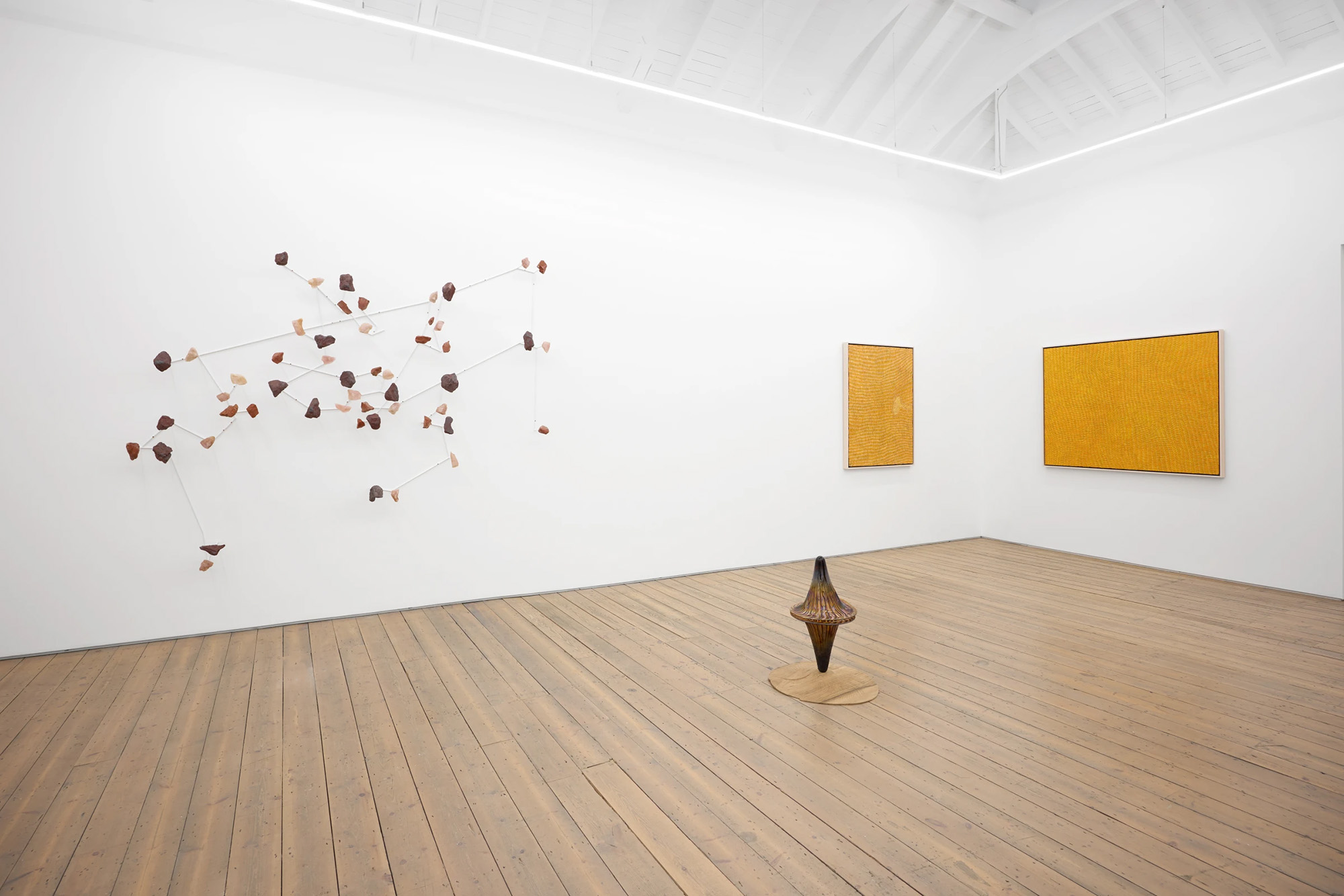
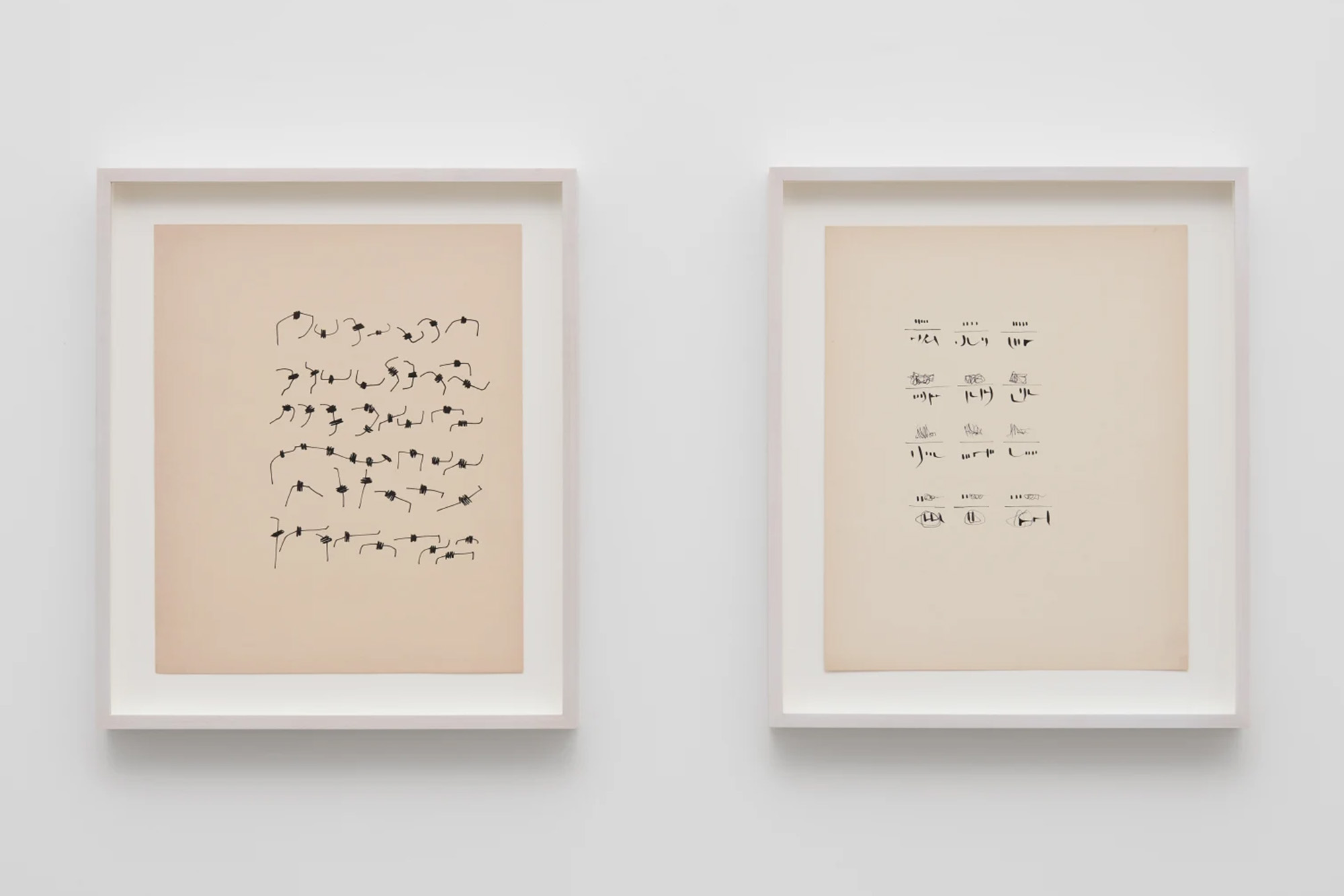
figs.i,ii
An exhibition at Edel Assanti, a commercial gallery in London, seeks to explore the inherent communicative qualities of visual art. Through diverse works from nine artists of differing mediums, it is asked if an understanding of the natural world and natural places can be found through visual art differently, or perhaps moreso, than through intellectual written word. It takes us back to the formation of the Enlightenment, when man separated themselves from nature through the distance of study, analytical understanding, scientific research, written description, and a view of nature and the world read apart from, above, and without, rather than from a place of interconnectedness, symbiosis, and within.
It starts with works of Mirtha Dermisache, apparent illogical and illiterate prose texts of an unidentifiable language. The artist, who died in 2012 aged 72, repeatedly invented visual form that looked like the written word, but formed of glyphs and forms that are not any known one. Her first book, of 500 pages, was published in 1966, not carrying semantic meaning but with a deep aesthetic, asemic flow. It was spotted by Roland Barthes who spoke of the work as having “extreme intelligence of the theoretical problems related to writing.”
With her writing, Dermisache was interested less in a veritas of meaning within the marks on the paper, and more in another form of communication those marks may present, explaining that “it’s not important what happens on a sheet of paper, the important thing is what happens within us.” This might speak to the heart of how art communicates, creating unique relationships with each viewer and each viewing. That Dermisache aligns her aesthetic form so closely to human writing is perhaps decoy, or trying to trick the viewer into searching for one kind of meaning or exact communication, eventually giving up and allowing, instead, a different form to emerge.

fig.iii
The title of the exhibition, Each Place Its Own Mind, is borrowed from ecologist David Abram’s 1996 book The Spell of the Sensuous, found by Edel Assanti Co-Founder and Director, Jeremy Epstein. Abram’s work concerns the loss of a human relationship to nature and how he saw the human mind as renouncing its “sensory bearings” in relation to nature. His text searched for other, perhaps abandoned – in the post-Enlightenment Global North, at least – ways in which the mind may connect to place, nature, the past, and other living beings through, in his words, the “inner, psychological world and the perceptual terrain that surrounds us.”
Two intricate yellow canvas by Yukultji Napangati, from North of Kiwirrkurra, Western Australia, are offered up early in the exhibition as further means to help break the expected readings and meanings in pattern-based work. As post-Enlightenment Global North readers may see written language in Dermisache’s scripts, in Napangati they might see plans, maps, territories, or landscape. But as an Aboroginal artist, they are not mapping or replicating the landscape, so much as infusing its meaning and histories through a singular, repeating pattern of lines and dots.
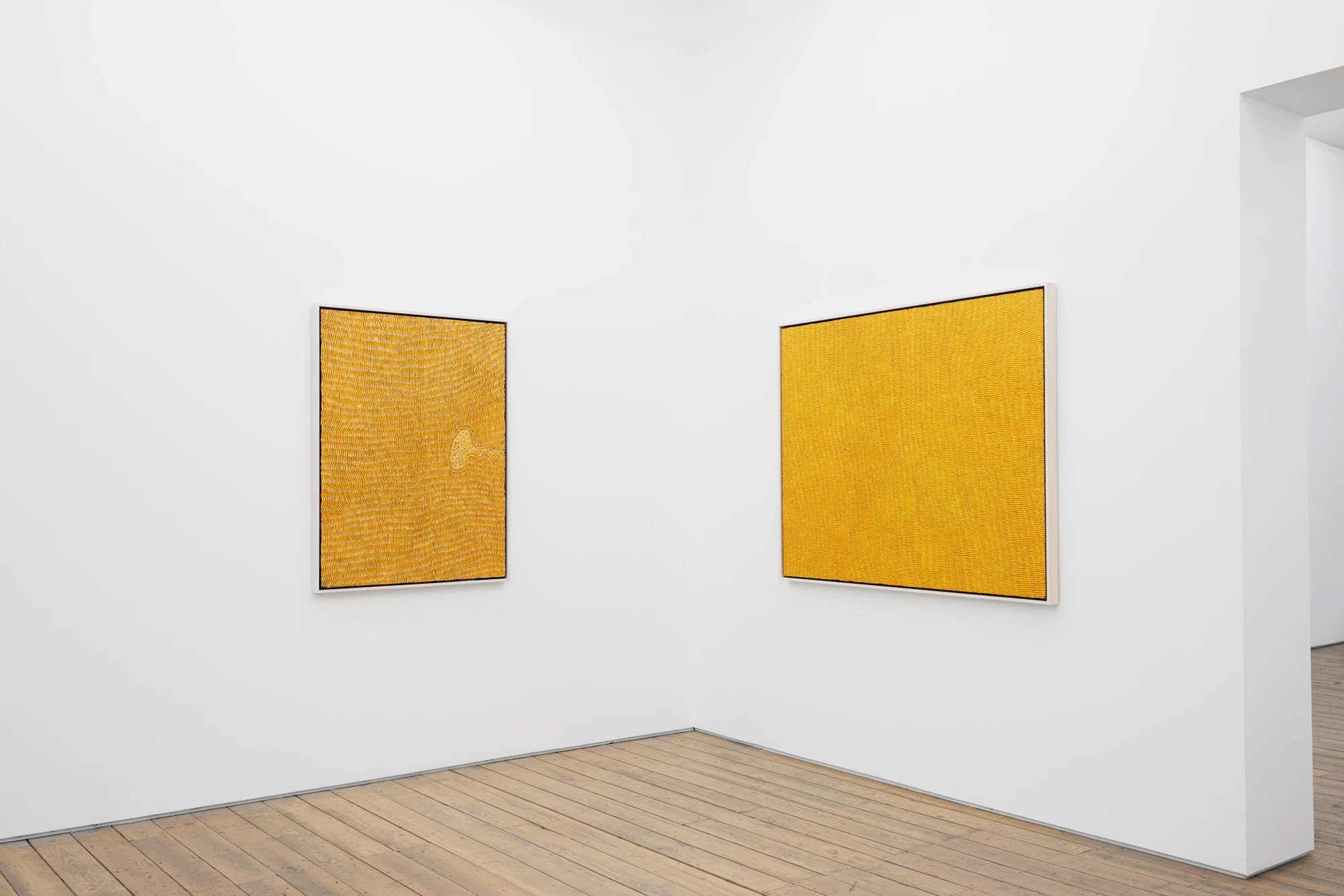
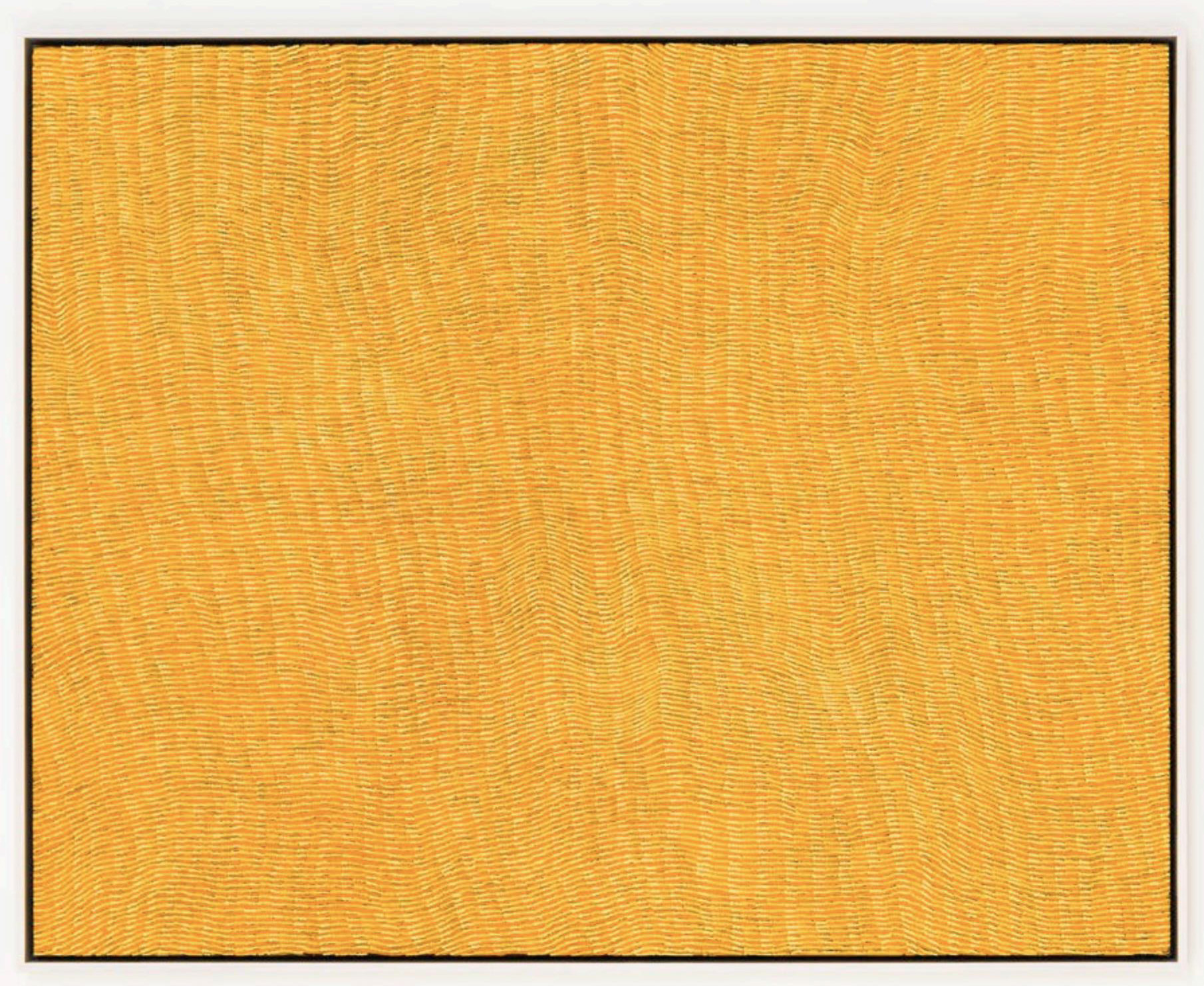
figs.iv,v
It is a landscape, but not one that is fixed, instead it is one shimmering and shifting, through time and space, and one holding its own voice – a voice shared with Napangati through a close cultural connection to place, passed through matrilineal ancestral knowledge, experiences, and stories. The Marrapinti landscape carried through the marks is a living one, not only moving through space as the dance between sand dunes and wind, but also as its own life, not one beholden upon mankind for its existence.
The only artist in the show represented by Edel Assanti is Noémie Goudal, whose work concerning the artificiality and construct of nature we previously featured in recessed.space (see 00016). Here, she evolves that conversation with new work formed of trompe l’oeil photographs that ask the viewer to reconsider their frames of reference and sight. Goudal builds frameworks in exquisite natural environments, each frame holding folded and warped photographs of the exact same vantage they sit in front of. What results is a double exposure of place, asking a lot of the photographic image and long-asked questions of veritas, but also inviting questions of the viewer to seek a new way of looking at place, breaking the framed construct and all such framework entails.

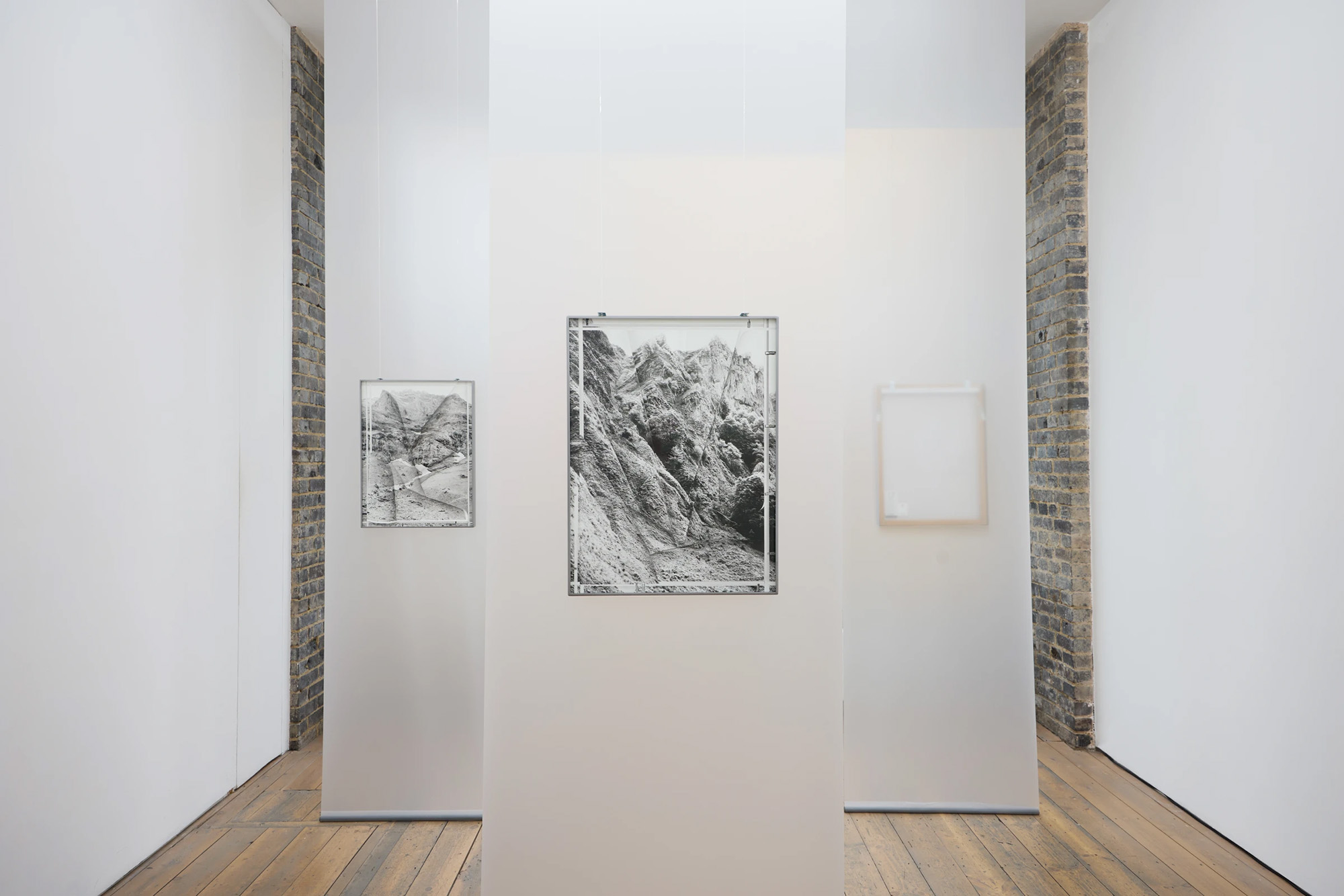
figs.vi,vii
There is currently a moment of awakening to indigenous creative practices across the art worlds – and art markets – of the Global North. Adrian Pedrosa’s curation of last year’s Venice Biennale gave centre stage to artists, stories, genders, and identities that had been kept in the shadows of post-war art histories with a curation that received mixed critical responses, but wide acclaim for the political act that it was. At the same event, Archie Moore won the Golden Lion for his meticulous study of his Abroginal family tree, and how it – and his people – are contorted into colonial familial, legal, and violent framings – all of which he discussed in interview with recessed.space (see 00194). Later this year major exhibitions of artists of various indigenous backgrounds are planned for major international museums across the world.
Often – perhaps especially when considering the Art Market rather than wider Worlds – this rise of indigenous art is presented as something new, exotic, unexpected, or considered only through the lens of a more traditional art canon and history it was not included within. Often, however, it is brought to attention by curators genuinely interested in exploring not only alternate modes of visual communication, but through it alternative modes of thinking, seeing, being, and sharing counter to dominant narratives, politics, and powers.
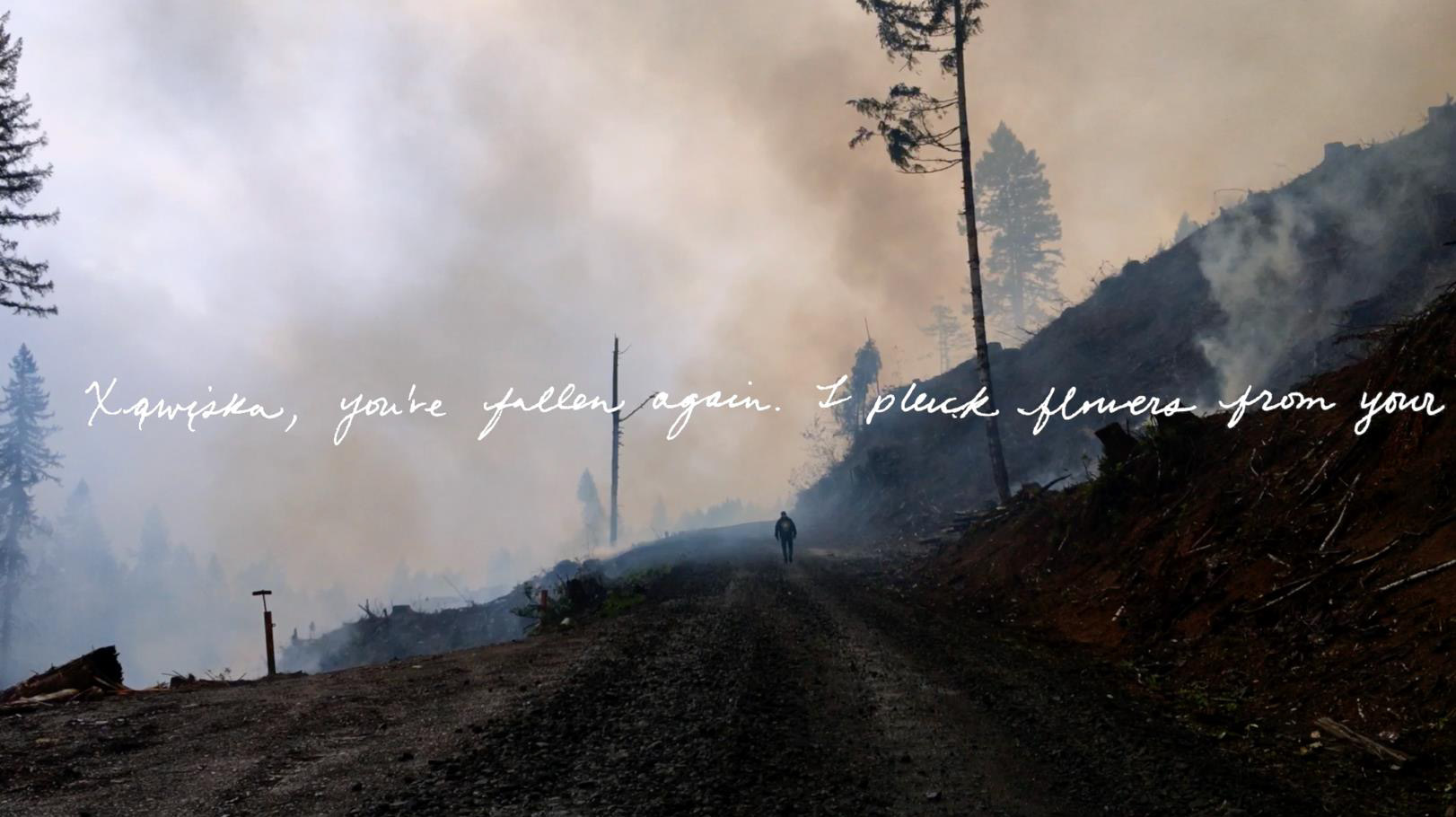
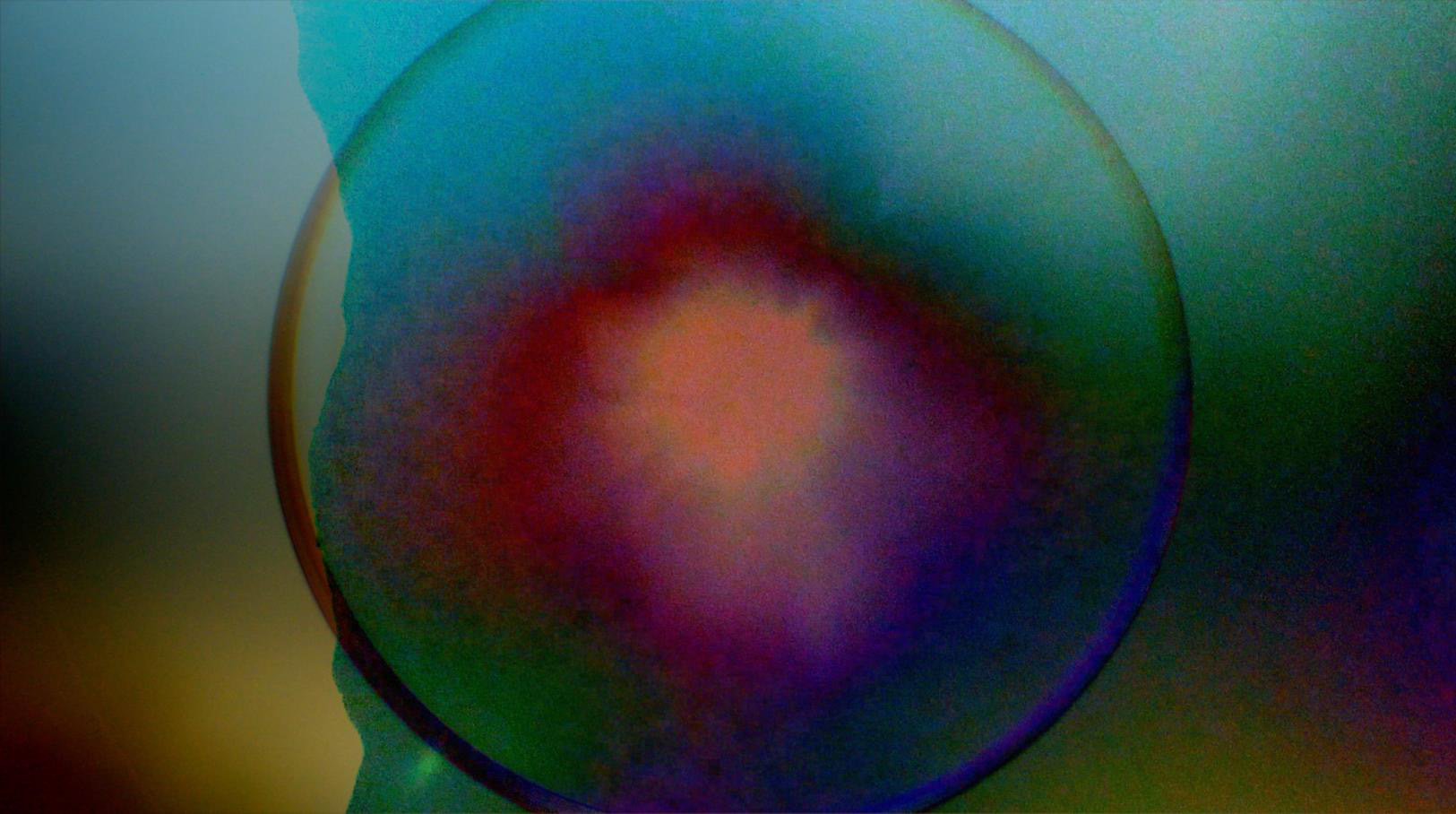
figs.viii,ix
As such, Each Place Its Own Mind, contains a number of other works from indigenous ways of making and being on top of those yellow documents of place by Yukultji Napangati. The work of experimental filmmaker Sky Hopinka, of the Ho-Chunk Nation of Wisconsin, also explores the place that his people have lived alongside for, intertwining its history with personal and collective memories to create a form of myth that seeks to push against a top-down description of place, history, and life. Sculptor Bronwyn Katz turns earthen fragments into a constellation. Held in place through a metal structure, visible but painted so as to disappear into the wall of the gallery, stones and minerals are held in space, ruptured not only from their place in the earth but also from the place they hold in contemporary neoliberal and colonial value systems.
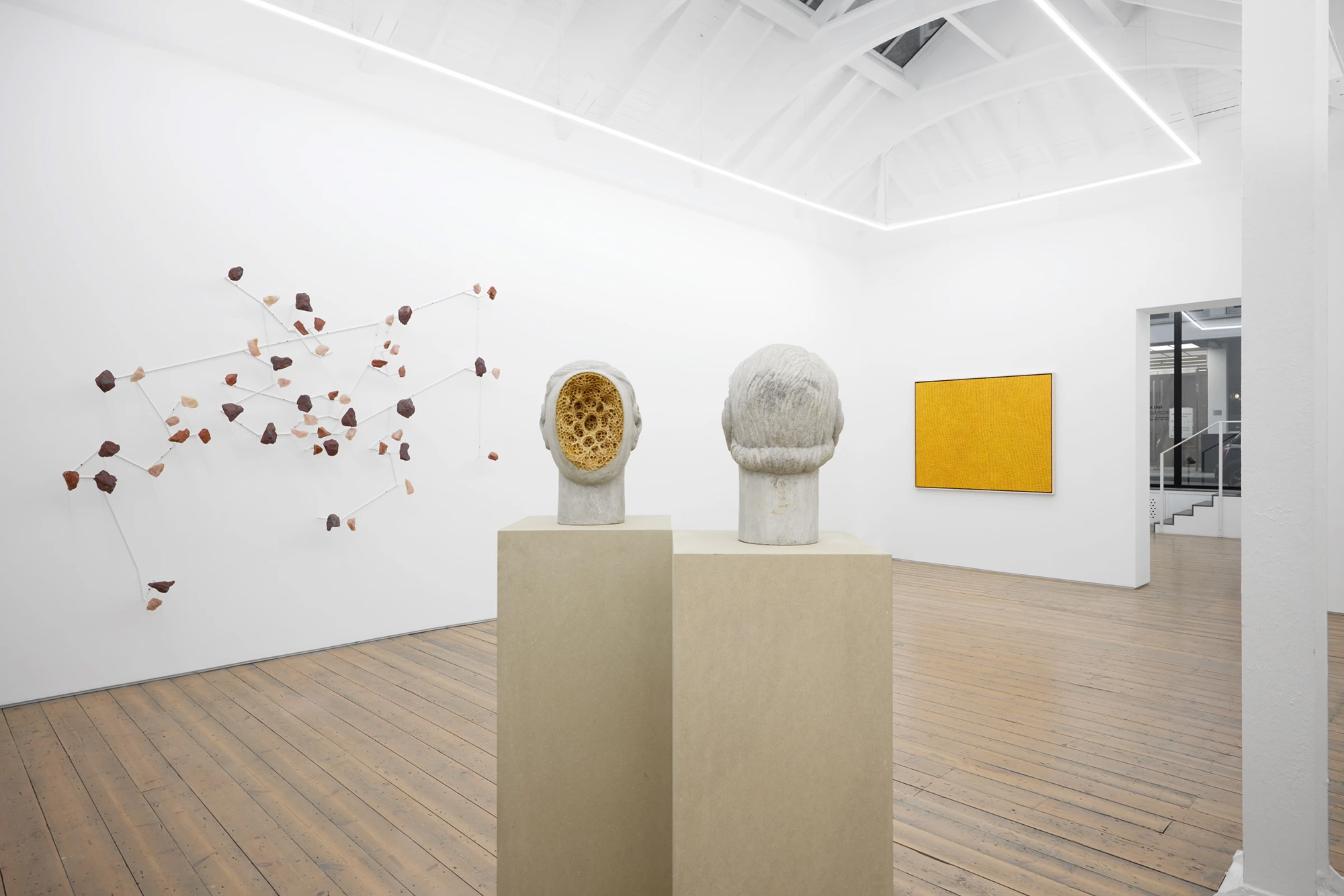
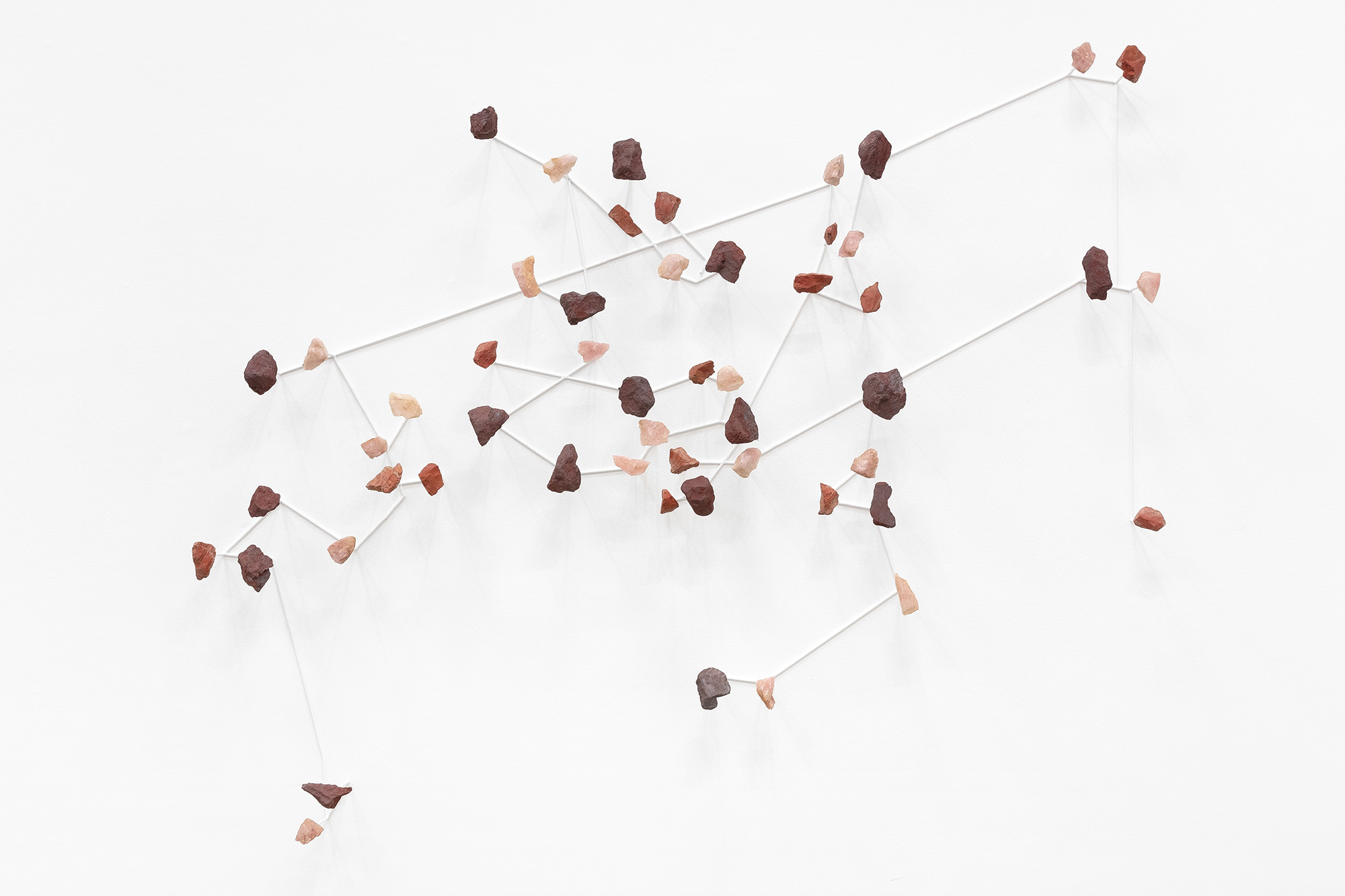
figs.x,xi
The sculpture, //xū //nana (seeds of the sweet-thorn) (2024) is formed of iron ore, rose quartz, and jasper, which speak to the familial history of extractive mining, clearing of space, wounds, and community histories. From a reading of place and landscape that has come to be read through the language of physical extraction as one in service to the modern-age demands for its material qualities, Katz restores one of inherent memory (of both the land and those who live with it) and identity away and apart from economic values, as an act of defiance and opposition.
Other works may not carry the slightly-awkward “indigenous art” label, but nonetheless have a singular consideration of place, seeking for a form of communication between elements of nature rather than a human communication about nature. Czech artist Anna Hulačová’s concrete heads are hollowed out and offered up to bees to complete the work, a playful formal outcome that invites further questions around human psyche, animal relations, and delicate shared ecosystems.
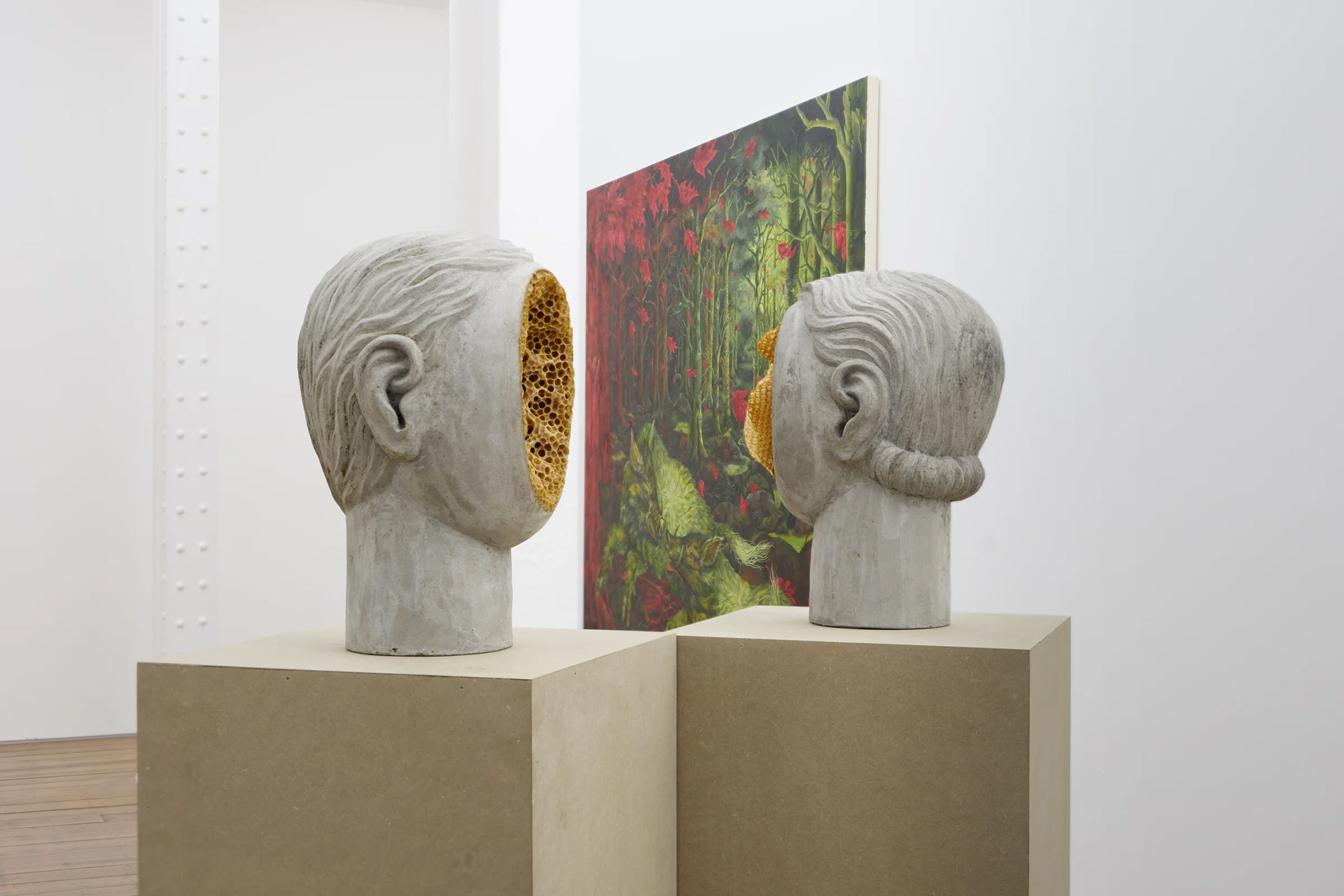
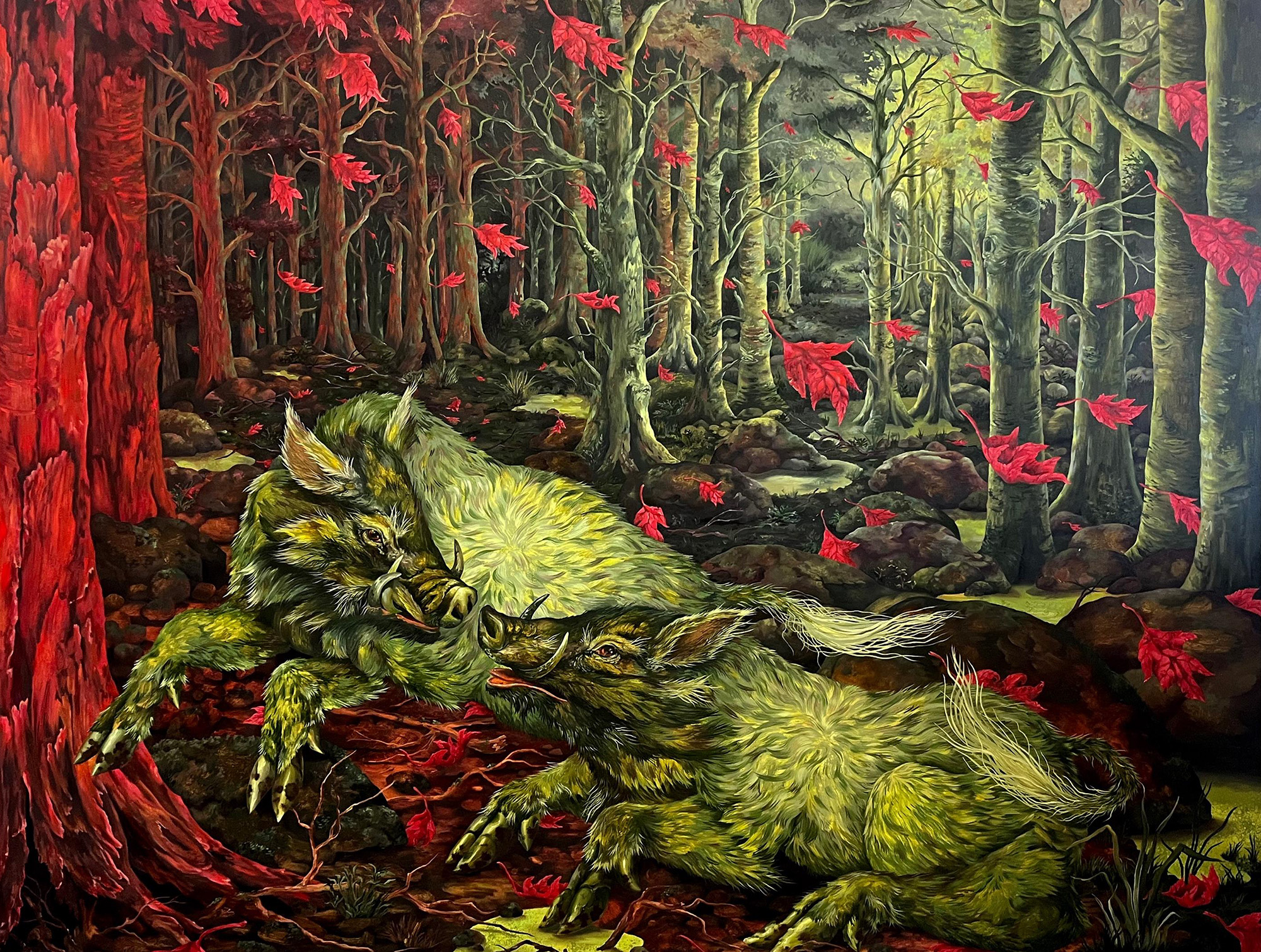
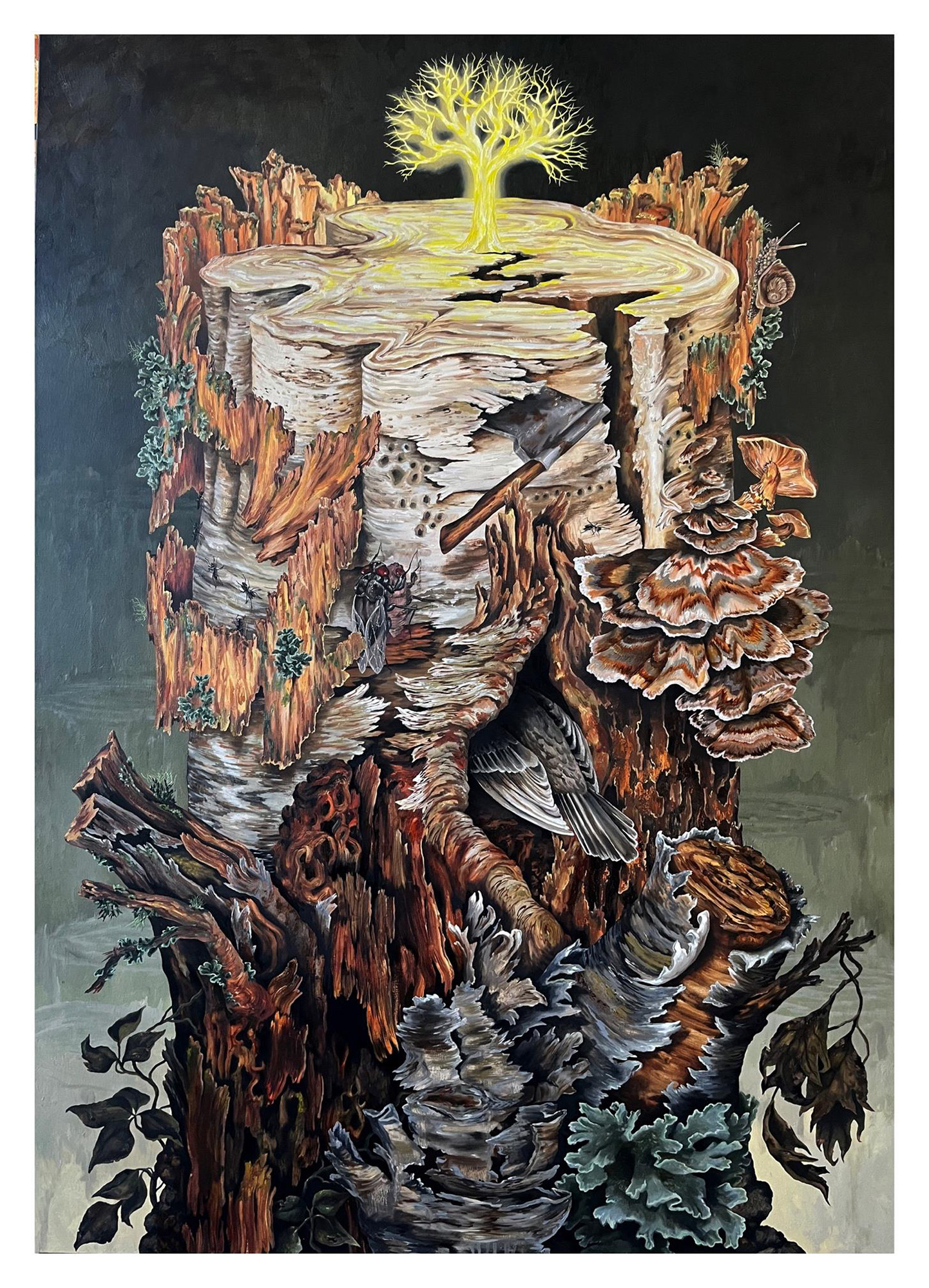
figs.xii-xiv
Kat Lyons’ fantastical paintings seem to be an inquiry into the dreams of nature itself, channelling a non-hierarchical worldview of growth, decay, life, and death, within which the human is only a minor participant. In the centre of the main upstairs room sits a single sculptural totem. By Marguerite Humeau, it contains selected elements from the natural world – yeast, venom, honey, fungal cultures – and it sits in its own time, speaking to thousands of years of historic, nuanced evolution, and to years in the future when such ingredients of nature may be rare or extinct.
Emmanuel Vander Auwera’s works push against and play with digital readings of the natural world. At Edel Assanti, the artist continues a line of inquiry that has been explored recently in works at the Biennale de l’Image en Mouvement 2024 and at the KW Institute for Contemporary Art, a feedback loop in which AI-generated footage of a flying flock of birds is presented to another AI system of pattern recognition, counting, and cataloguing that seeks to number the birds and document them. It is cut up with digital avatars repeating real quotations from people who have fallen in love with AI chatbots, while imagery from Caryn AI, a digital girlfriend, also narrates from conversations about digital loneliness and parasocial relationships.
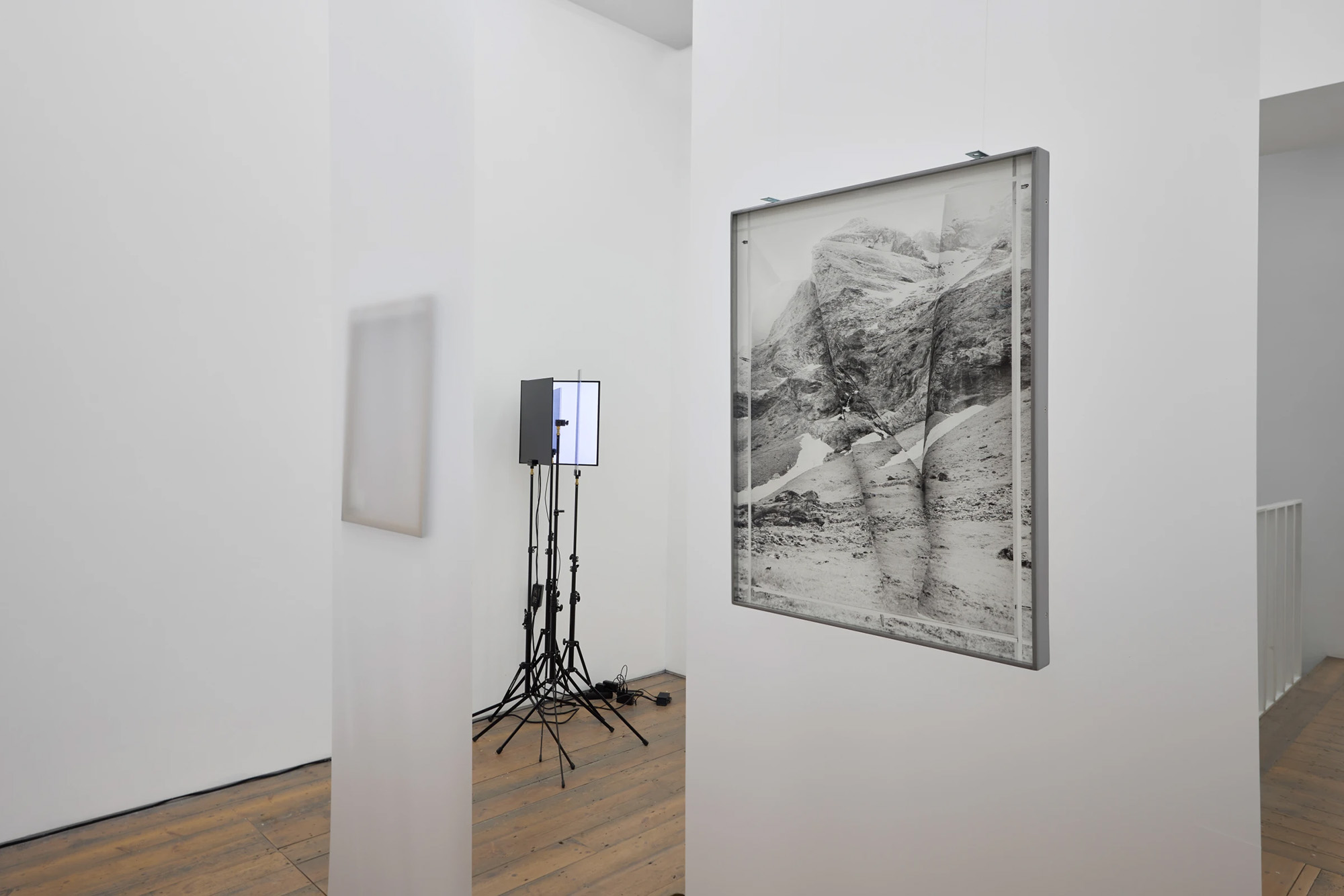

figs.xv,xvi
All of this is presented as a video sculpture, a small cluster of screens that reflect, refract, holographically overlay, and intervene with one another, and one another’s meaning. A small sculptural form, but packed with layered complexity, the artist asking similar questions around reality and conceptions of nature as Noémie Goudal, but proposing questions that we may not answer until the nearing future, and through a medium far-removed from text, and offering far-removed ways of thinking through it all.
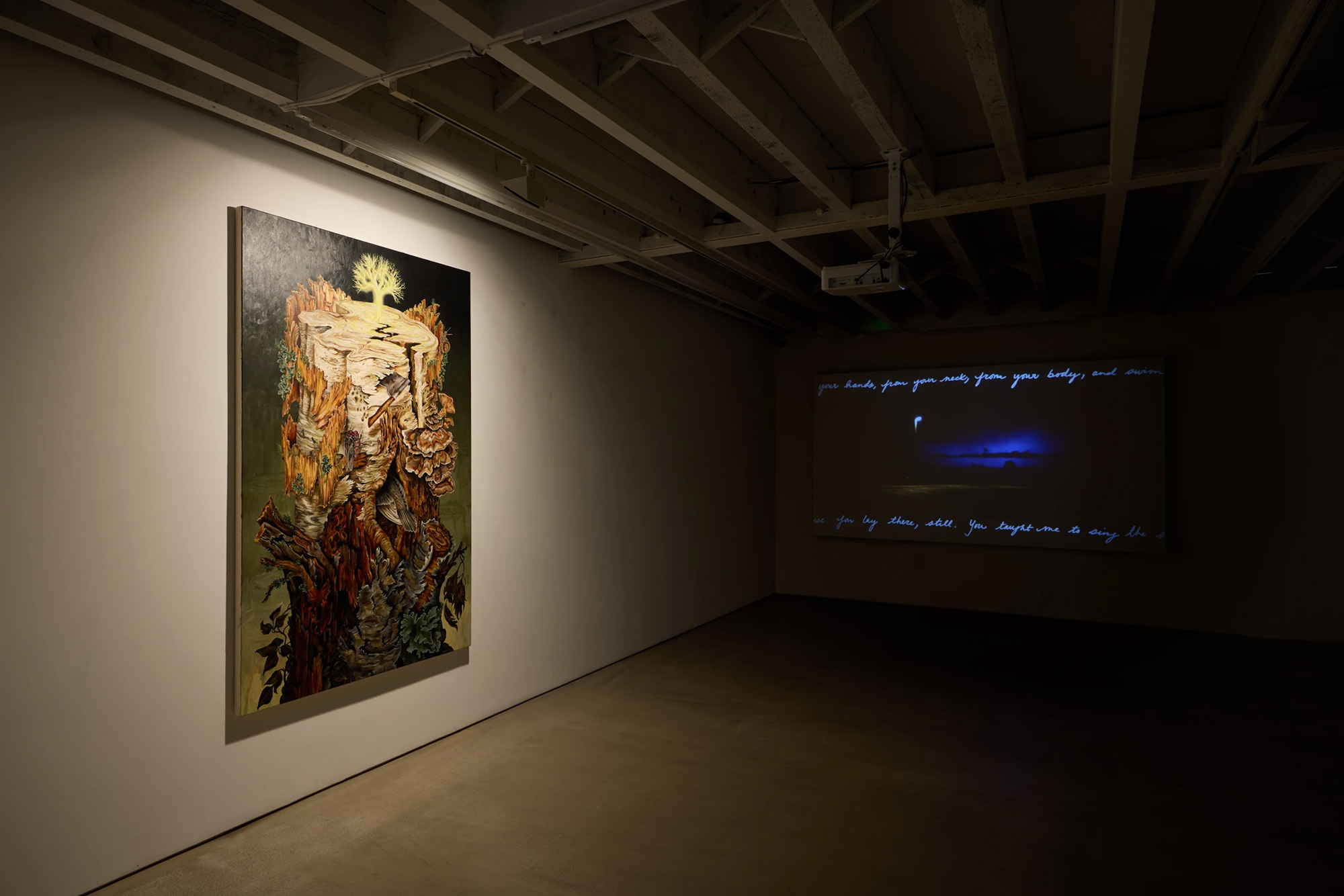

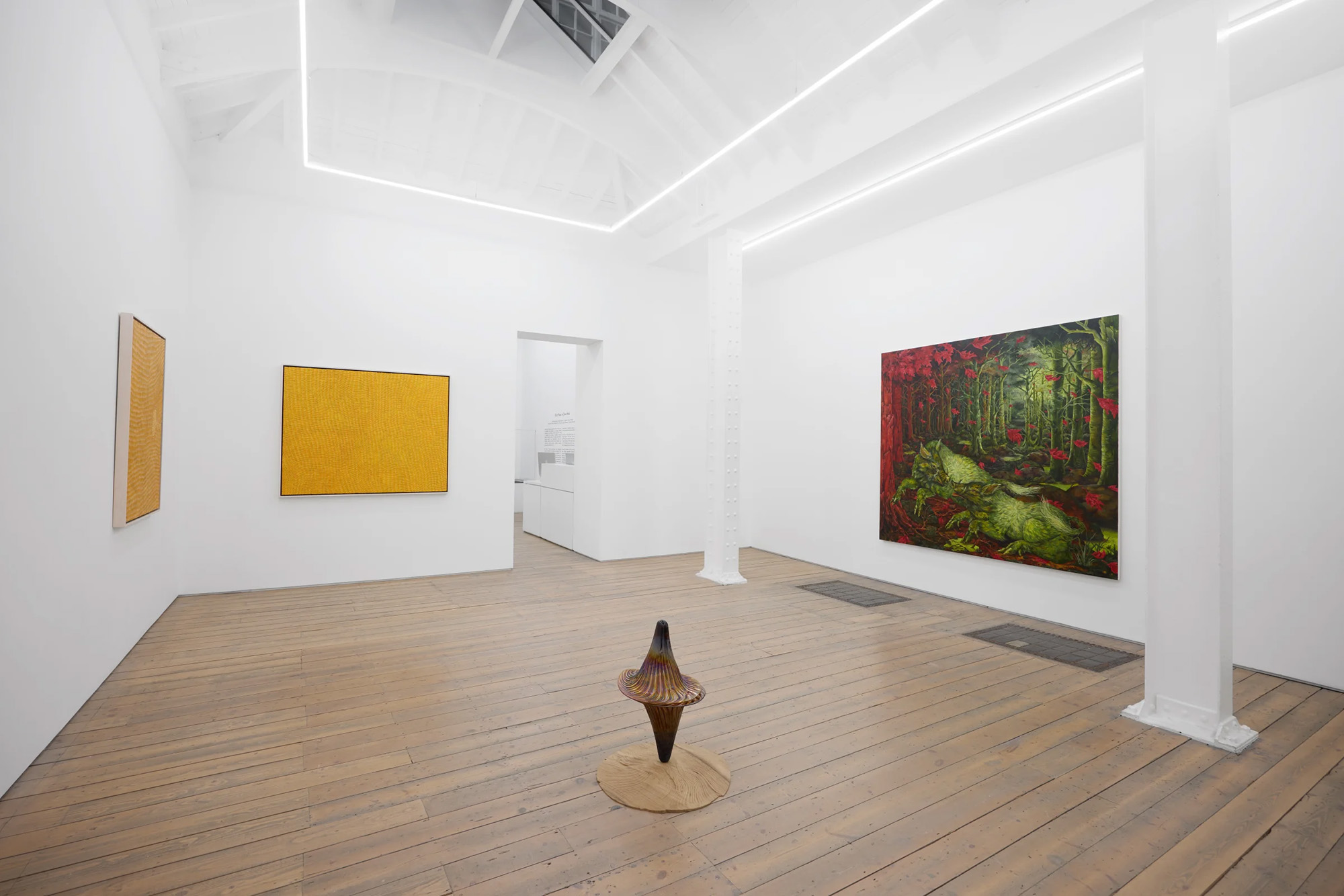
figs.xvii-xix
This is not one of those exhibitions that comes with essays, though obviously the curation is rooted in reading and research and any visitor who wishes to embark on that journey to deepen their thinking of underlying ideas is welcome to. But it’s not fixed to the wall in vinyl as a script to read before or whilst looking at the visual projects. It is hoped, true to the conceptual ideas of the show, that the works themselves may create their own space of conversation and idea, responding to the initial kernel of the curatorial prompt.
It could easily have been an exhibition overly-reliant upon the literature, critical ideas, and curatorial research that underpins the presentation and individual works. That would, however, do a slight disservice to the conceptual underpinning that art and aesthetics itself is a valid and critical form of communication aside from the written word, and one which is not only of the contemporary art world but also of deeply rooted, indigenous, and global ways of relating to landscape, place, and nature.
Oak, madrone, Douglas fir, red-tailed hawk, serpentine in the sandstone, a certain scale to the topography, drenching rains in the winter, fog off-shore in the summer, salmon surging in the streams – all these together make up a particular state of mind, a place-specific intelligence shared by all the humans that dwell therein, but also by the coyotes yapping in those valleyes, by the bobcats an dthe ferns and the spiders, by all beings who live and make their way in that zone. Each place its own psyche. Each sky its own blue.
David Abram, from The Spell of the Sensuous.
Edel Assanti was founded in 2010 by Jeremy Epstein & Charlie Fellowes. Established in London, the gallery works
with international artists whose practices engage with the social, cultural or political realities. Edel Assanti’s programme’s tendency towards interdisciplinary, research-led
work demonstrates how artists are uniquely positioned to witness & distill the complex narratives that define our
era.
Having been located in London’s Fitzrovia since 2014, in 2022 Edel Assanti opened 4,000 square foot gallery in a renovated listed building on Little Titchfield Street. The gallery’s
premises play host to a dynamic events programme in parallel to gallery exhibitions: talks, performances, screenings & live music. Edel Assanti’s digital presence
encompasses a multi-chapter series of artist video interviews, alongside short films published to accompany
exhibitions.
In 2021 Edel Assanti founded London Gallery Weekend (LGW), an annual celebration of London’s diverse gallery community bringing together 140 contemporary London
galleries. Now in its fifth year, the gallery remains at LGW’s helm. Chief amongst LGW’s initiatives is an ambitious
partnership with Art Fund enhancing the relationship between London’s galleries & regional museums across the UK, via a research focus group & a travel bursary
scheme for regional curators.
www.edelassanti.com
visit
Each Place Its Own Mind opens at Edel Assanti on 17 January & runs through to 15 March. Further information available at the gallery website:
www.edelassanti.com/exhibitions/126-each-place-its-own-mind
images
figs.i,ii,iv,vii,x,xii,xv,xix Installation shots courtesy Edel Assanti,
© Tom Carter
fig.iii Examples of Mirtha Dermisache’s works,
courtesy Edel Assanti.
fig.v Yukultji Napangati,
Untitled (2019)
(Pintupi)
Acrylic on linen
Framed:
153.7 x 130.8 x 7 cm
(YN 40).
©
Yukultji Napangati, courtesy Edel Assanti & the artist.
figs.vi,xvi,xvii
Installation shots © Will Jennings.
figs.viii,ix Sky Hopinka, Fainting Spells (2018) Stills from HD video, stereo, colour,
10 min 45 sec,
AP 2, Edition of 3 plus 2AP.
©
Sky Hopinka,
Courtesy Edel Assanti & the artist.
fig.xi Bronwyn Katz, //xū //nana (seeds of the sweet-thorn) (2024) © Bronwyn Katz, Courtesy Edel Assanti & the artist
and Edel Assanti. Photography: Mario Todeschini.
fig.xiii Kat Lyons, Exclusion Zone (2024), oil on canvas, 198.1 x 223.5cm ©Kat Lyons, Courtesy of the artist
& Pilar Corrias London.
fig.xiv Kat Lyons, The Tree (2024), oil on canvas,
193 x 132.1cm
© Kat Lyons, Courtesy the artist
& Pilar Corrias London.
publication date
13 January 2025
tags
David Abram, Edel Assanti, Roland Barthes, Communication, Mirtha Dermisache, Each Place Its Own Mind, Enlightenment, Jeremy Epstein, Noémie Goudal, Sky Hopinka, Anna Hulačová, Marguerite Humeau, Indigeneity, Indigenous art, Will Jennings, Bronwyn Katz, Landscape, Language, Kat Lyons, Nature, Yukultji Napangati, The Spell of the Sensuous, Text, Emmanuel Vander Auwera, Writing
www.edelassanti.com/exhibitions/126-each-place-its-own-mind


